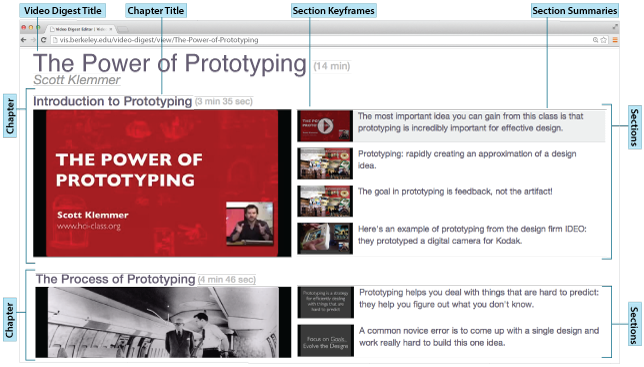Video Digests: A Browsable, Skimmable Format for Informational Lecture Videos
Amy Pavel, Colorado Reed, Bjoern Hartmann, Maneesh Agrawala
Abstract
Increasingly, authors are publishing long informational talks, lectures, and distance-learning videos online. However, it is difficult to browse and skim the content of such videos using current timeline-based video players. Video digests are a new format for informational videos that afford browsing and skimming by segmenting videos into a chapter/section structure and providing short text summaries and thumbnails for each section. Viewers can navigate by reading the summaries and clicking on sections to access the corresponding point in the video. We present a set of tools to help authors create such digests using transcript-based interactions. With our tools, authors can manually create a video digest from scratch, or they can automatically generate a digest by applying a combination of algorithmic and crowdsourcing techniques and then manually refine it as needed. Feedback from first-time users suggests that our transcript-based authoring tools and automated techniques greatly facilitate video digest creation. In an evaluative crowdsourced study we find that given a short viewing time, video digests support browsing and skimming better than timeline-based or transcript-based video players.

A video digest affords browsing and skimming through a chapter/section organization of the video content. The chapters are topically coherent segments of the video that contain major themes in the presentation. Each chapter is further subdivided into a set of sections, that each provide a brief text summary of the corresponding video segment as well as a representative keyframe image. Clicking within a section plays the video starting at the beginning of the corresponding video segment.
Research Paper
Results
Video digests generated with our system